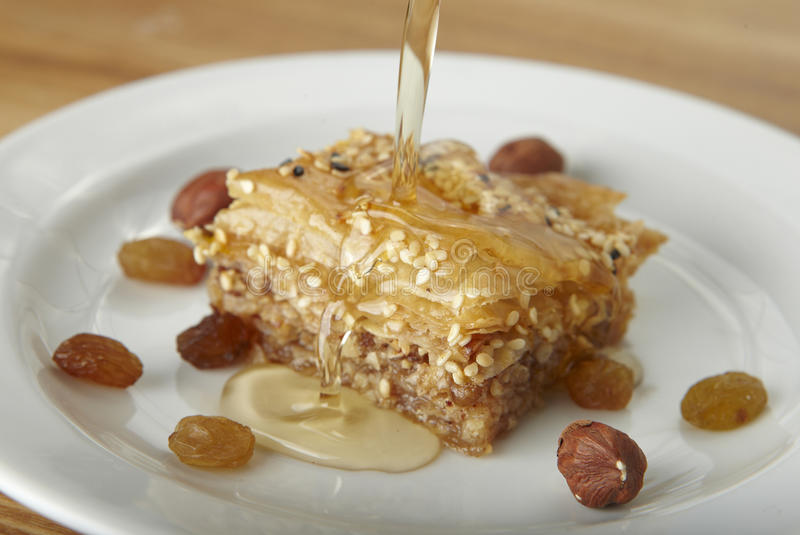Is it a coincidence this was composed after enjoying a delectable gift of homemade baklava?
All things in moderation…
~Happy Holidays!
When sugar comes to mind, you probably think of table sugar, or sucrose. But this simple carbohydrate is made up of even smaller sugar molecules called glucose and fructose in an exact 50/50 split. Glucose and fructose are both sugars, no surprise there. But what exactly are the differences?
“Glucose and fructose are both monosaccharides – sugar molecules in the simplest form,” says Jamie Feit, RD, MS. “The body’s preferred source of fuel is glucose. Glucose is sourced by breaking down disaccharides or polysaccharides, which are larger sugar molecules. Meanwhile, fructose is found in its simplest form in fruits and some vegetables like beets, corn and potatoes.”
Like all sugars, both glucose and fructose are carbohydrates. But not all carbs are created equal! When we eat sucrose, the glucose and fructose molecules become split inside the body. The main difference between glucose and fructose – for our purposes, is how they are processed within your body.
Glucose
Common sources: rice, oats, bread, pasta & starchy vegetables. You may notice that these foods are pretty filling. This is because glucose, after being absorbed by the small intestine, raises blood sugar levels. This stimulates the production of insulin, which in turn induces the creation and secretion of leptin. Leptin is known as the “fullness hormone,” and it does exactly what it sounds like it does: makes you feel full.
When we talk about blood sugar, we’re actually referring to blood glucose. This is the amount of glucose in your bloodstream. The glucose travels through the bloodstream, providing energy to all the tissues in your body that need it. That’s why, of the three macronutrients (carbohydrates, fats and proteins), we refer to carbs as our main source of energy
Fructose
Common sources: fruits, honey, soft drinks and vegetables (in small amounts). Fructose changes blood sugar levels much more gradually than glucose and doesn’t seem to impact insulin levels. Unlike glucose, which is processed throughout the whole body, fructose is almost entirely metabolized by the liver.
Over time, overconsumption of fructose can cause fatty liver and visceral fat around essential organs. The fructose-rich Standard American Diet shows a high prevalence of nonalcoholic fatty liver disease. This condition can trigger insulin resistance and type 2 diabetes.
Also, while glucose stimulates the fullness hormone, there’s some evidence that fructose may do the opposite. For this reason, some experts view diets high in fructose as contributing to patterns of overeating. Simply put, if you don’t feel full, you’ll just keep on eating.
So, does this mean we should stop eating fruit because they’re high in fructose? The answer is (mostly) no. Like most things in nutrition, there are more factors to consider than just one unit of measurement, i.e. fructose content. Unlike fructose-rich and nutrition-poor junk foods and soda, fruits contain a plethora of other healthy components. They’re loaded with water and fiber, meaning their fructose is released slowly. In stark contrast, foods like candy and soda immediately overload the liver with fructose.
Plus, fruits are nutritionally dense, containing numerous vitamins, minerals, antioxidants and polyphenols. Studies show that diets rich in fruits and vegetables are associated with lower rates of heart disease, diabetes and strokes. They’re even linked to improved psychological health
That having been said, the majority of your carbohydrates should come from vegetables rather than fruits. And while fructose from fruits may be okay for most, people with diabetes should be warier. Consult your doctor on the appropriate amount of fructose that’s safe for your personal consumption. Because ultimately, sugar is sugar
The Takeaway
The best practice is to rely on whole, natural foods. Fruits, veggies, and grains all contain sugar. But all are high in fiber, which slows the speed at which the sugar is absorbed.
Keep in mind: Sugar is sugar — whether in cupcakes or carrots. Consult your health care provider to determine your individualized safe consumption limit. Consuming too much sugar causes inflammation and gut problems. And those problems can lead to chronic health problems such as obesity, diabetes, cancer, arthritis, heart disease, and inflammatory bowel disease.
“The takeaway here is to eat foods in their least processed form,” says Feit. Choose a piece of fruit containing all the fiber in its whole form instead of a fruit juice drink, or brown rice (a whole grain) instead of white pasta (refined grains). Plus, a wide variety of fresh produce increases the spectrum of important vitamins and minerals ingested and utilized by your body.



